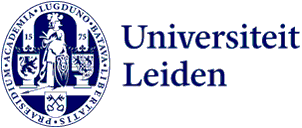Copyright and FeedbackFruits
FeedbackFruits (FbF) is education software with different task types accessible via Brightspace. Below you will find how to use FbF in compliance with copyright rules.
How does FeedbackFruits Interactive Document work?
In a course a teacher can upload a document as a pdf in the task type FbF Interactive Document. This document will then be visible to all students registered for the course. The students can comment on the text in the document, see each other's comments and respond to each other. The teacher can also build in questions about the content.
FeedbackFruits and written material
You can use the following material in FbF without restrictions:
- own unpublished work;
- material made available with a Creative Commons license or other license permitting this use;
- material in the public domain that is not (anymore) protected by copyright.
Copyright is not an issue here.
It is possible to use copyrighted material in FbF. This material must comply with the following conditions:
- the articles are accessible via the University's Catalogue, and
- the publishers of the articles are to be found on the list of licensed e-resources, and
- the publisher's name has a ‘yes’ under 'PDF'.
If you wish to use copyrighted material that does not meet these three conditions, please contact the ICT and Education Coordinator of your faculty.
FeedbackFruits and audio and video material
Interactive Audio and Interactive Video
Via the task types Interactive Audio and Interactive Video a teacher can make audio or video materials available to students. Videos and podcasts that are available from any publicly accessible website are made available via a link to the material concerned.
Teachers may not upload a copyrighted video or podcast to FbF. For this kind of materials no agreements have been made with copyright holders.
Teachers may only upload videos and podcasts that:
- have been made by the teachers themselves or by their students;
- are being made available by the maker with a Creative Commons license or other licence permitting such use;
- are in the public domain and are no longer protected by copyright.
Peer Review
Peer Review contains a set of tools that allow students to upload their own material, such as videos or podcasts. Subsequently, the teacher and/or fellow students can add comments. As this concerns proprietary material, copyright (of third parties) is not an issue here.

